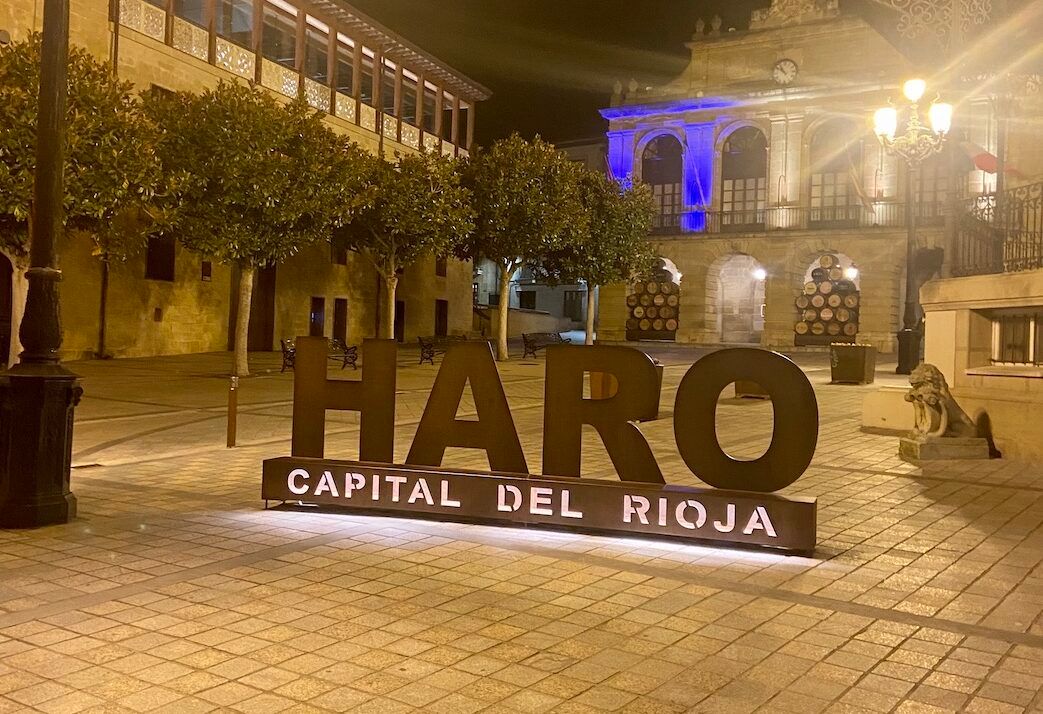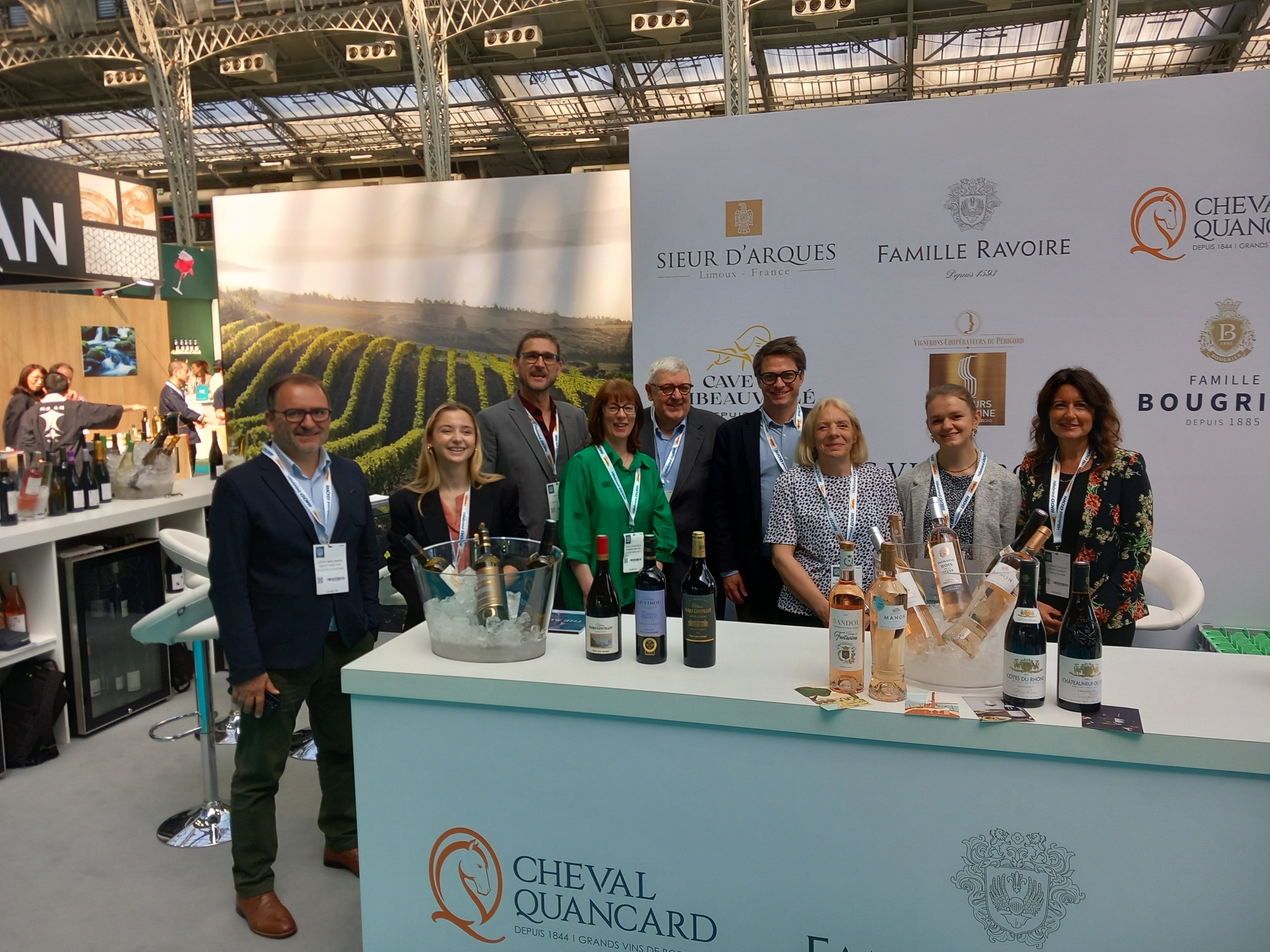“We dropped our luggage at Los Agustinos, currently a hotel but once a refuge for religious hermits, a military hospital and a jail, so it was ready for our group of excitable journalists,” writes Jones.
There are three zones in the Rioja DOCa: Rioja Alta, Rioja Alavesa and Rioja Oriental (called Rioja Baja until 2018). The small city of Haro (population 12,000), is the capital of Rioja Alta, and famous for being one of the first Spanish cities to have electric street lighting, shortly after Paris and London, but more importantly is the centre of Haro’s Railway Station District which has the highest concentration of centenarian wineries in the world, all huddled around Haro Station in stone and wooden buildings built in the 19th century.
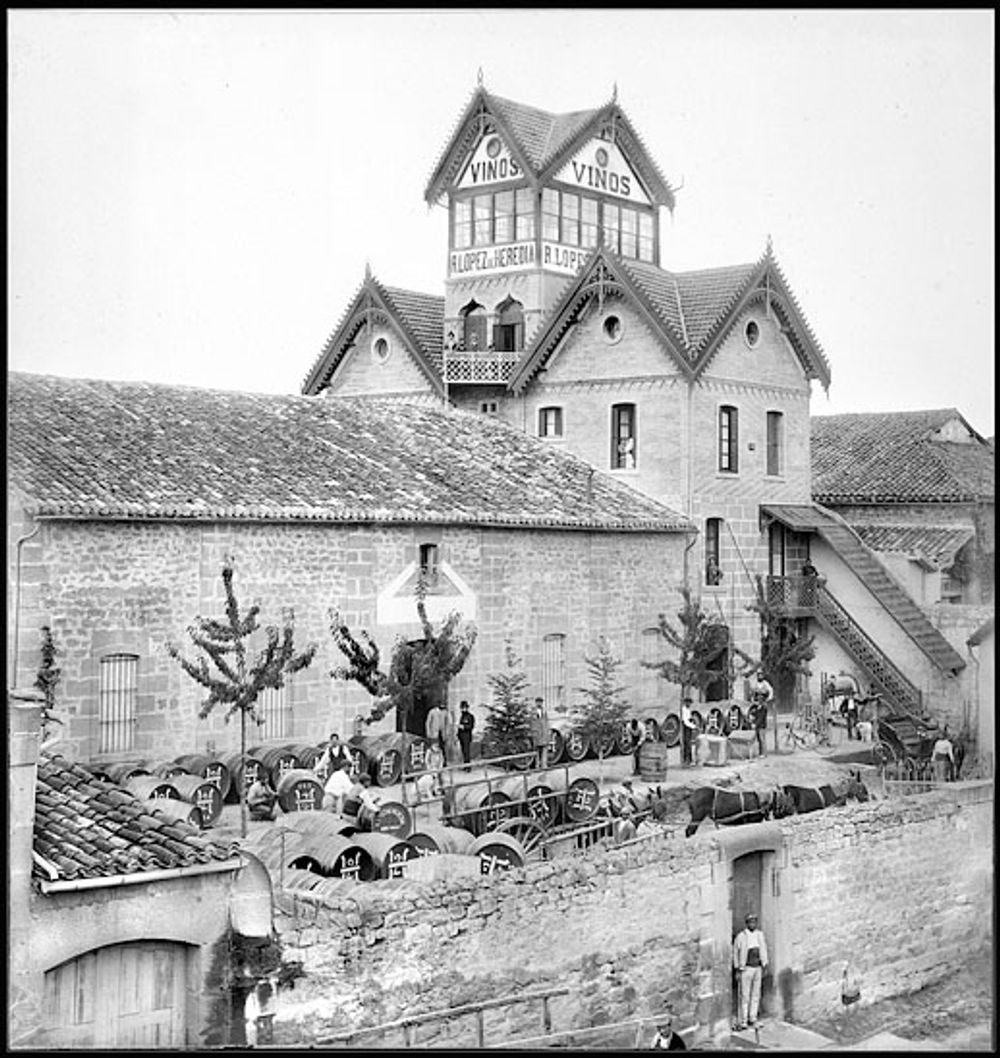
The story is to do with Rioja sending wine to Bordeaux in their times of need. Bordeaux had issues with powdery mildew (1852-1862) and phylloxera (1863) that devastated their vineyards. French “commission agents” who had been buying cereals in Northern Spain to export to France, soon realised that they could take advantage of the issues in Bordeaux by sending wines in bulk by rail to Bilbao and then shipped to Bordeaux.
These “commission agents” set up wine warehouses nearby, names like Armand Heff (which was then purchased by Rafael Lopez de Heredia), Blondeau, Sauvignon, Serres and Vigier.
This became the ‘Golden Age’ of Spanish Wine, with Spanish vine-growing registering an increase from 2,266,000 hectolitres in 1877 to 9,478,000 hectolitres in 1890, Spain became the ‘wine cellar of the world’ just as the USA was the ‘granary of the world’.
It became apparent that the French, British and Nordic upper classes wanted more refined wines and soon these agents were barrel-ageing the wines, buying proper pressing machines, pumps for racking and introducing egg whites for clarifying – trying to make the ‘ultimate’ Bordeaux style. And soon the local Basques became involved.
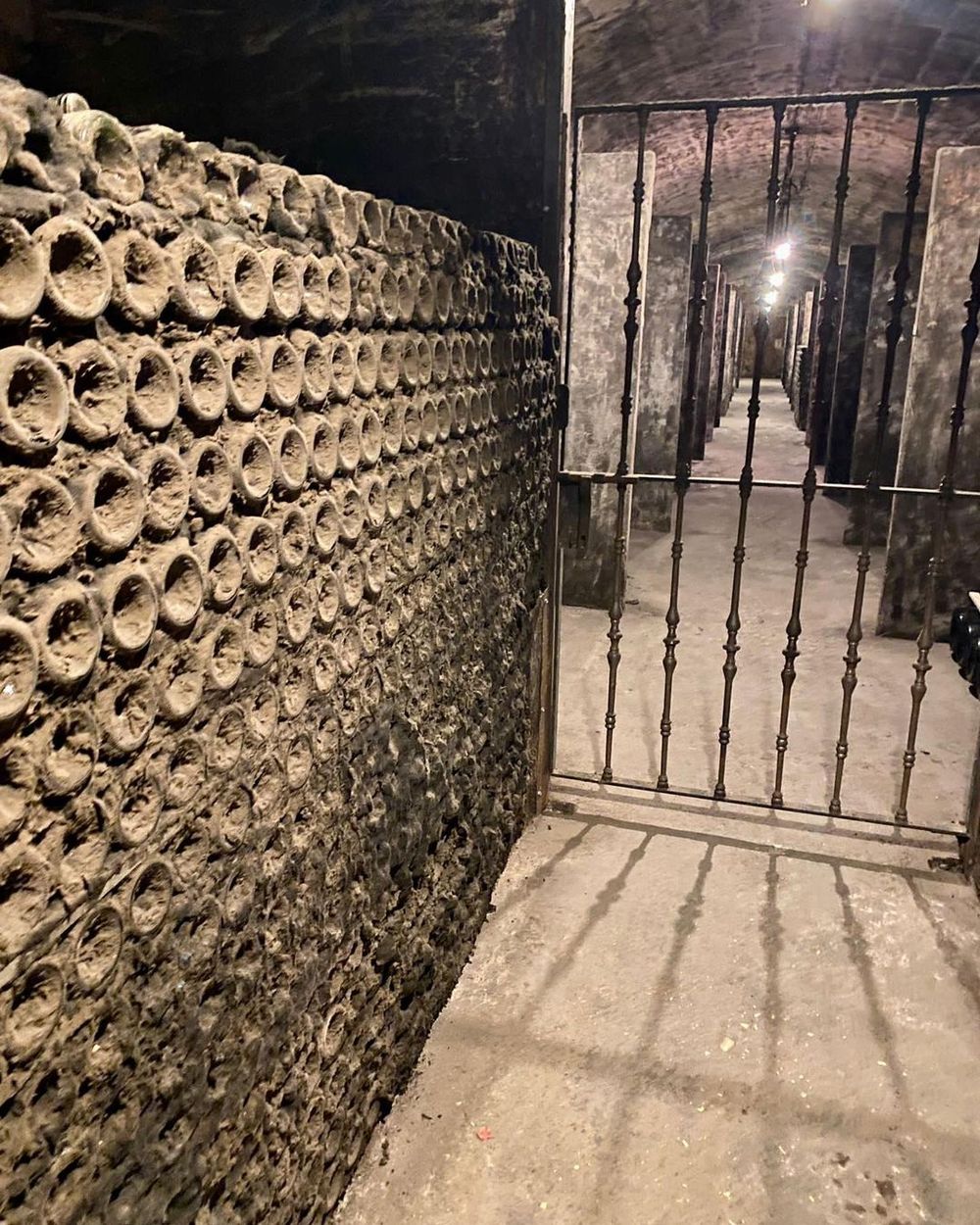
Solid chateaux-like buildings were built, with thick walls to protect from both the heat and the cold, deep underground tunnels were dug for perfect storage, and the wines had a ‘French flair’ to their names: Rioja Clarete, Rioja Medoc, Rioja Borgona, Blanco Graves, Blanco Barsac and Blanco Sauternes.
I was told that the origin of the name “Rioja” as a wine region was forged in Haro’s Railway Station District which, by 1890, already looked like it does today. Seven wineries are located in this small neighborhood. Five of these wineries are centenary wineries: López de Heredia (founded in 1877); CVNE (founded in 1879); Gómez Cruzado (founded in 1886); Rioja Alta (founded in 1890); and Bodegas Bilbaínas (founded in 1901). The other two wineries are Muga (founded in 1932) and Roda (founded in 2001).
The setting in which these seven wineries are located is often referred to as the Golden Mile of Rioja. The soils in this area are made of sandstone and limestone, and the climate is a combination of continental (coming from the plateau), Atlantic (due to the winds from the north), and Mediterranean (coming from the southeast through the Ebro river).
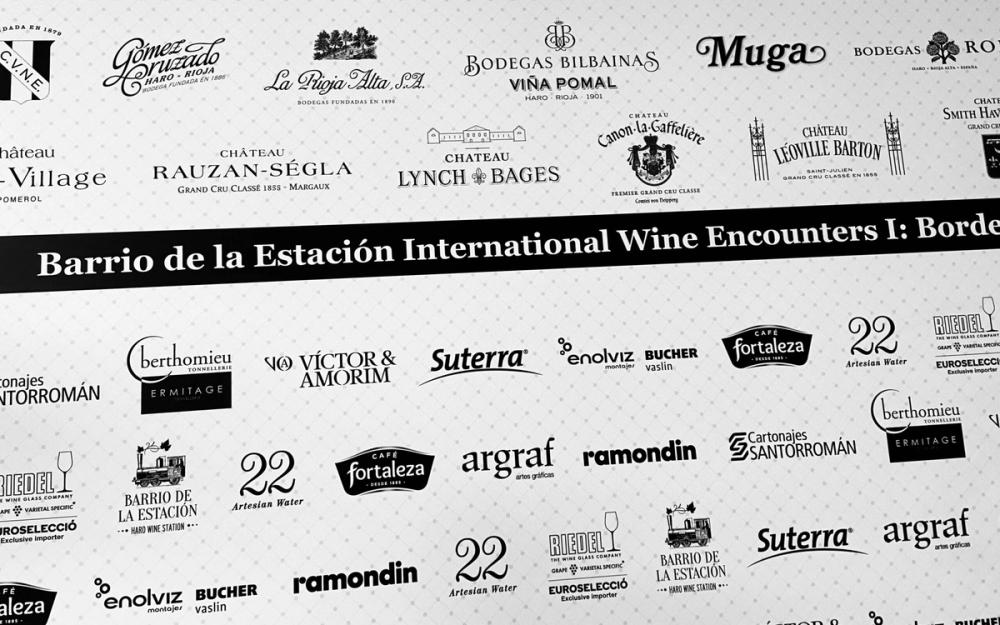
This press trip was to explain the deep connection shared by Haro and Bordeaux brought to life by the Barrio de la Estación International Wine Encounters 1: Bordeaux, the first of a series of events linking Rioja with the world’s great wine regions. “The assistance the two cities provided each other has transcended the centuries and significantly contributed to the success and development of the great wines of La Rioja,” says the organisers.
So, after an overnight visit to Madrid on the Sunday, where Barcelona won 4-0, an oversight to leave out our Welsh hero Gareth Bale! We were up early for our journey to Haro, passing the scenic Sierra de Guadarrana mountains whilst we introduced ourselves to a bevy of international journalists and Madrid sommeliers.
On arrival we dropped our luggage at Los Agustinos, currently a hotel with a fabulous 3-storey cloistered courtyard, but in its day had been a refuge for religious hermits, a military hospital and a jail, so it was ready for our group of excitable journalists.
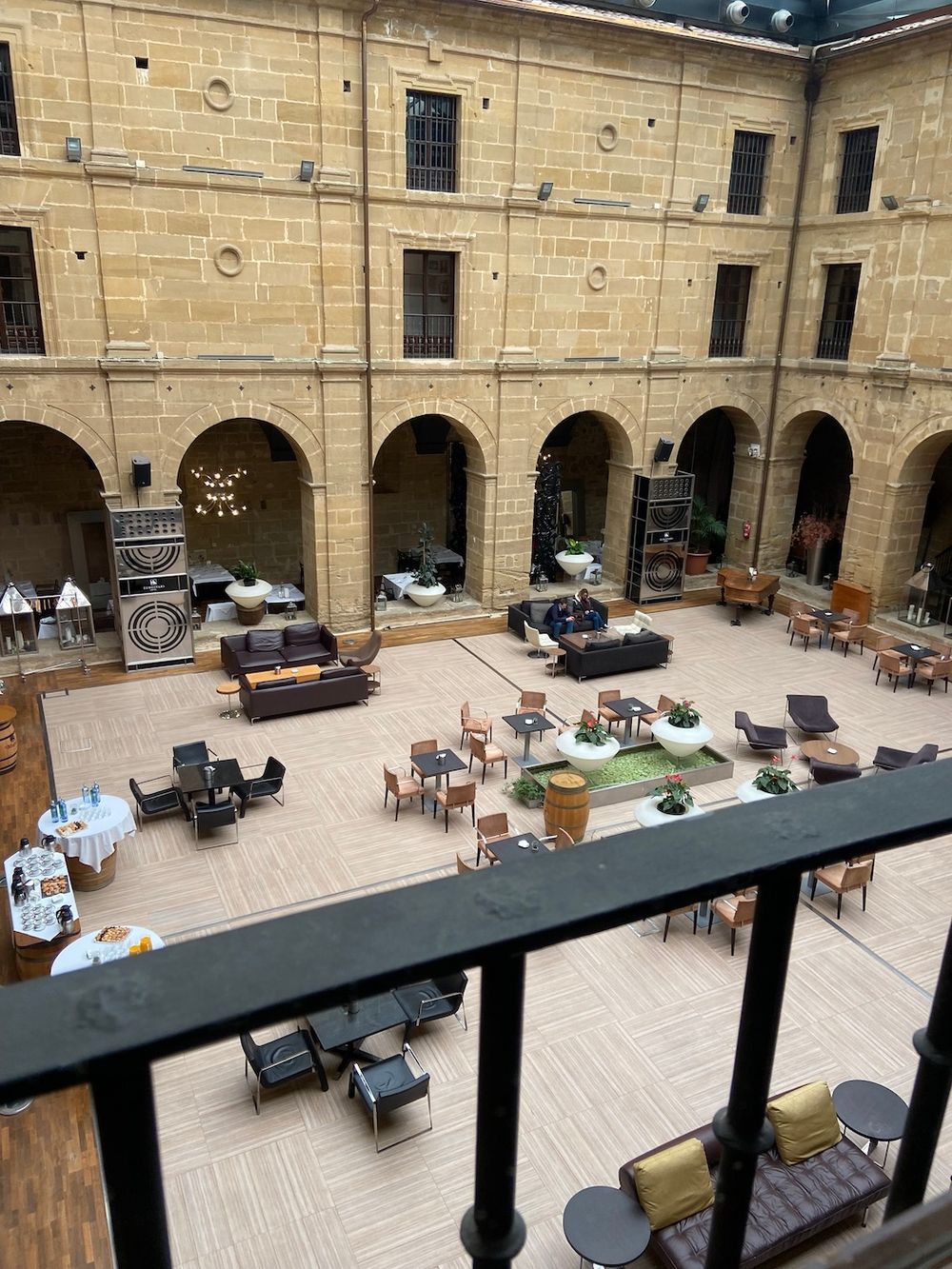
Day 1 Tasting – Barrio de la Estacion International Wine Encounters 1: Bordeaux
The guest châteaux traveling from Bordeaux were; Château Smith Haut Lafitte; Château Rauzan-Ségla; Château Lynch Bages; Château Léoville Barton; Château Petit Village and Château Canon La Gaffelière.
It was an absolute pleasure to taste such an array of classic Bordeaux in a bodega in Haro, from extra large Riedel Bordeaux glasses, my notes here are purely on the Bordeaux, although we did taste from the six participating bodegas these will be shown in the two follow-up reports.
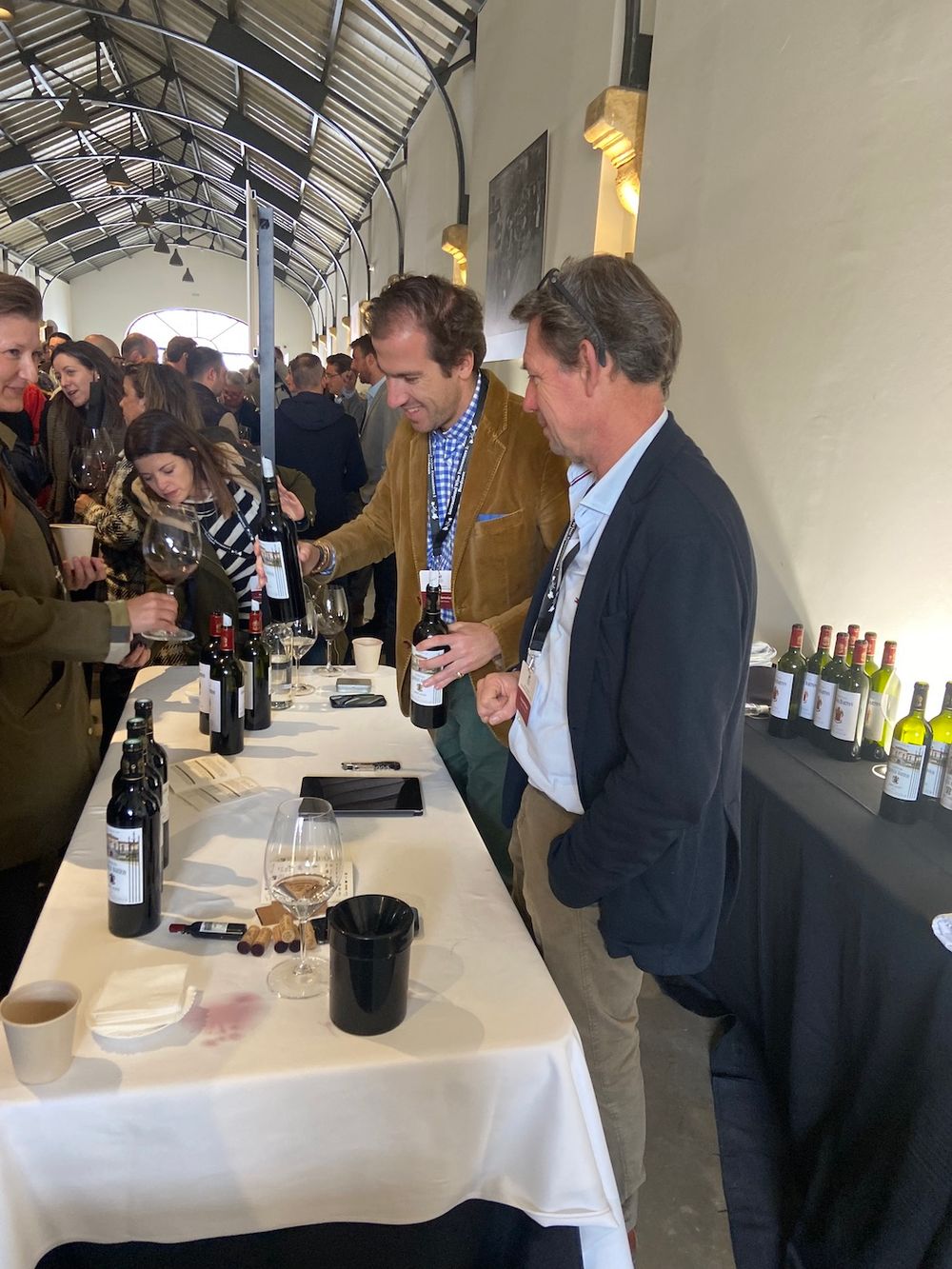
Château Smith Haut Lafitte 2019 – Blanc
To be fair a rather good way to start a tasting after our journey from Madrid, although this will age for a decade or two, the instant hit of fresh white peaches, crisp pineapple, lime curd, then a creamy textured feel but with fresh acidity to mean that the spittoon was superfluous in this instance.
Château Léoville Barton 2011
Blackcurrants with bright blueberries, this is pretty seamless, love the fresh acidity that makes it so easy to enjoy after a decade, restrained elegance, evolving perfectly, a real treat.
Château Langoa Barton 2016
Cedar, bilberries, fresh and gutsy with restraint, there is a lovely savoury sweet meat background.
Château Rauzan-Ségla 2006
My notes said generous on the fruit, this is layered and textured, a complex balance of blue and dark fruits, hints of pencil but pretty complete, definitely worth buying if you see it in auction.
Château Canon 2011
Meaty, offal, sweet blood meat, bilberries, fresh and ripe, love the freshness from the bright acidity, great length, pretty perfect.

Château Lynch Bages 2019
A legendary vintage, the balance and the fruit-filled basket from pomegranate, to bilberries, to red cherries to mint and spice, delicate so refined, would have preferred to be sitting down tasting, a complete stunner.
Château Ormes de Pez 2016
Polished, black fruited, all about focus and fresh-layered fruit, full bodied but carries it well, needs time.
Château Smith Haut Lafitte 2019 – Rouge
A wine to age for decades, noted as a superlative vintage, dark fruit and dark olives, granite, spice, cedar, but there is a wonderful silkiness to it, quite brilliant.
Château Petit-Village 2017
Always on my bucket list as a good value option, although this was quite taught, with the savoury element hiding the fruit.
Château Beauregard 2016
Blackberries, plummy, chocolate and cocoa, I like the balance and it ends with a lovely luscious fruit and silky balance.
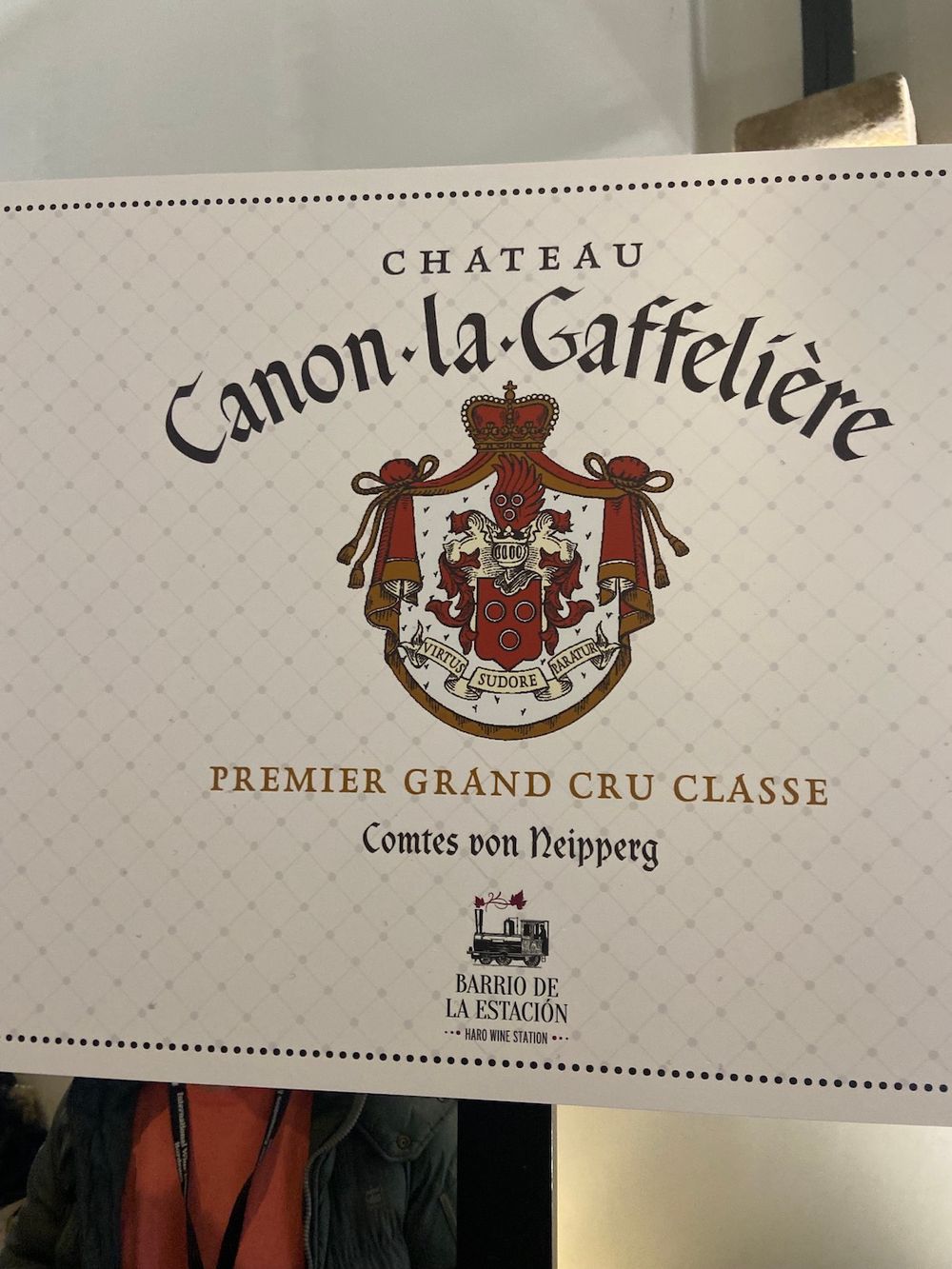
Château Canon La Gaffelière 2016
Kirsch, blueberries, lavender, violets and spice, cedar and spice, fruit gently evolves in glass, with an amazing silky long lingering finish.
Château D’Aiguilhe 2016
Rich in texture, saddle, meaty, dark-fruited with bright cherries, a great priced wine, definitely worth buying, love the succulence and finish.
Bodegas taking part in the Barrio de la Estacion International Wine Encounters
Bodegas Bilbaínas-Viña Pomal, CVNE, Bodegas Muga, Gómez Cruzado, La Rioja Alta, S.A. and Bodegas RODA.
I would note that Lopez de Heredia were not involved this time with the Barrio de la Estacion International Wine Encounters which organised the event, all six other Bodegas were and over the next two installments I will dig deeper into each Bodega and recount world class wines, spectacular insights, superlative food, historical experience and a jolly good time.
